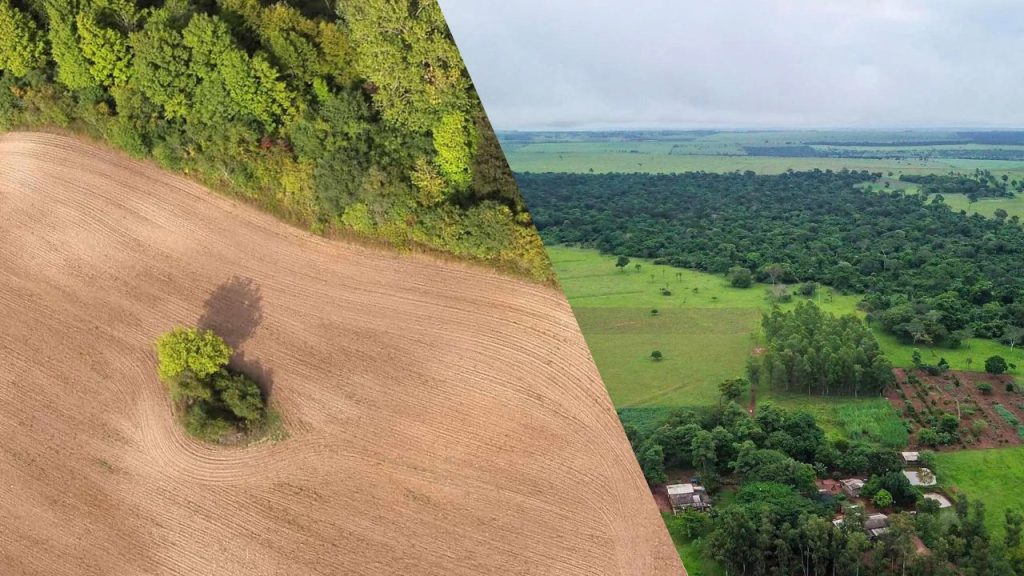Integrating Nature with Agriculture
Reforestation and conservation on farmlands are becoming increasingly vital as we face environmental challenges such as climate change, biodiversity loss, and soil degradation. Integrating these practices into agricultural systems can enhance ecosystem health, improve soil quality, and support sustainable farming. This article explores the importance of reforestation and conservation on farmlands, the benefits they offer, and how they can be effectively implemented.
The Role of Reforestation in Agriculture
Reforestation involves planting trees on lands that have been deforested or degraded. When applied to farmlands, reforestation can provide numerous benefits:
- Soil Health: Tree roots help to prevent soil erosion, improve soil structure, and enhance nutrient cycling. This can lead to better soil fertility and reduced need for chemical fertilisers.
- Water Management: Trees contribute to improved water retention and reduced runoff. Their presence can help to maintain groundwater levels and reduce the risk of flooding.
- Biodiversity: Reforestation on farmlands creates habitats for various species, boosting local biodiversity. This can lead to natural pest control and pollination, which benefits crop production.
Conservation Practices on Farmlands
Conservation practices aim to protect and restore natural resources on agricultural lands. Key conservation strategies include:
- Agroforestry: Combining trees with crops or livestock on the same land can offer multiple benefits. Agroforestry systems improve soil health, provide shade, and increase biodiversity, all while maintaining agricultural productivity.
- Cover Cropping: Growing cover crops during off-seasons helps to prevent soil erosion, improve soil fertility, and suppress weeds. Cover crops also enhance soil structure and water retention.
- Conservation Tillage: Reducing tillage or practising no-till farming helps to preserve soil structure, reduce erosion, and improve water retention. This practice also helps to sequester carbon in the soil.
Benefits of Reforestation and Conservation
Implementing reforestation and conservation practices on farmlands offers a range of benefits:
- Environmental Protection: These practices help to combat climate change by sequestering carbon dioxide, conserving water resources, and preserving natural habitats. They also reduce the impact of agriculture on local ecosystems.
- Economic Gains: Improved soil health and water management can lead to increased agricultural productivity and reduced costs for inputs such as fertilisers and irrigation. Additionally, diversifying income streams through agroforestry can enhance farm profitability.
- Enhanced Resilience: Farms that incorporate reforestation and conservation practices are more resilient to extreme weather events, such as floods and droughts. Healthy soils and diverse ecosystems can better withstand and recover from environmental stresses.
Challenges and Considerations
While the benefits of reforestation and conservation are clear, there are challenges to consider:
- Initial Costs: Implementing these practices may require upfront investment in terms of planting trees, establishing cover crops, and adopting new technologies. Financial support and incentives can help offset these costs.
- Management Complexity: Integrating reforestation and conservation practices into existing farming systems can be complex and may require additional expertise. Farmers may need training and support to effectively manage these practices.
- Long-Term Commitment: Successful reforestation and conservation require long-term commitment and ongoing maintenance. Trees and conservation systems take time to establish and realise their full benefits.
Reforestation and Conservation on Farmlands

Successful Implementation Strategies
To successfully integrate reforestation and conservation on farmlands, consider the following strategies:
- Planning and Design: Develop a comprehensive plan that aligns reforestation and conservation efforts with farm objectives. This may involve selecting suitable tree species, designing agroforestry systems, and integrating conservation practices with crop and livestock management.
- Government and NGO Support: Seek support from government programmes and non-governmental organisations (NGOs) that offer financial assistance, technical guidance, and training for reforestation and conservation initiatives.
- Community Involvement: Engage with local communities and stakeholders to ensure that reforestation and conservation projects meet local needs and priorities. Collaborative approaches can enhance project success and sustainability.
Case Studies and Examples
Several successful examples of reforestation and conservation on farmlands demonstrate their potential:
- The Forest Garden Approach: In various regions, farmers have adopted forest garden systems, combining trees, shrubs, and crops to create productive and biodiverse farming systems. These approaches enhance soil health, increase yields, and support local wildlife.
- Agroforestry Projects: Projects in the UK and globally have successfully integrated trees into agricultural landscapes, providing benefits such as improved soil fertility, reduced erosion, and increased biodiversity.
The Future of Reforestation and Conservation
The future of reforestation and conservation on farmlands looks promising as awareness grows and technologies advance. Continued research, innovation, and collaboration will be essential to overcoming challenges and maximising the benefits of these practices. As more farmers embrace reforestation and conservation, they will contribute to a more sustainable and resilient agricultural system.
Conclusion: Reforestation and Conservation on Farmlands
Reforestation and conservation on farmlands offer valuable opportunities to enhance environmental sustainability, improve soil health, and support biodiversity. While there are challenges to overcome, the benefits of integrating these practices into farming systems are significant. By adopting reforestation and conservation strategies, farmers can contribute to a healthier environment and a more resilient agricultural sector, ensuring the long-term viability of their farms and the natural resources upon which they depend.
